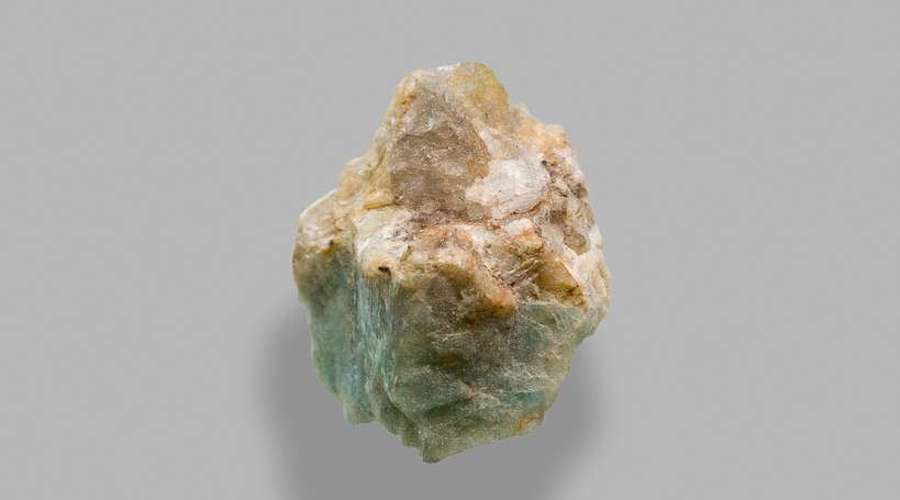
Researchers at the Vienna University of Technology are studying feldspar, a ubiquitous mineral that makes up about half of the earth’s crust and plays a surprisingly important role in cloud formation.
In a paper published in The Journal of Physical Chemistry Letters, the scientists explain that fine powder carried by air influences cloud formation and water molecules adhere better to feldspar dust than to other particles. Tiny feldspar grains floating in the atmosphere thus become excellent nucleation seeds, where water molecules stick and freeze, eventually forming a cloud.
Using a highly sensitive atomic force microscope, the team has shown that the unique geometry of the feldspar surface provides the perfect anchoring point for OH groups of hydrogen and oxygen—and subsequently for water.
“Researchers were considering several ideas why feldspar is such an effective nucleation seed,” lead researcher Ulrike Diebold said in a media statement. “It could be due to potassium atoms contained in feldspar, or perhaps certain defects in its crystal structure.”
To find out, Diebold and her team used a very sensitive atomic force microscope. In this microscope, the surface of the crystal is scanned with a fine tip point-by-point. The force between the tip and the surface produces an image with high resolution, where the position of each atom can be precisely determined.
“We placed a piece of feldspar in the microscope’s vacuum chamber and split it in half to obtain a pristine and clean surface,” Giada Franceschi, first author of the study, said. “We were puzzled by the results: The images of the surface looked different from what common theories had predicted.”
The cause was quickly found: Tiny water inclusions in the rock were the culprits. When the stone is broken apart, a little water vapour is released. This vapour attaches to the freshly split surface, and the water molecules break apart, forming hydroxyl (OH) groups.
“Under the microscope, you don’t see the feldspar surface itself but a surface covered with hydroxyl groups,” Franceschi said. “In nature, the feldspar surface is also covered with such a hydroxyl layer.”
Due to the geometry of the feldspar crystal, these hydroxyl groups are positioned in a way that makes them ideal anchoring points for water molecules. Water molecules can dock to the hydroxyl groups like building blocks that fit together precisely. Thus, the hydroxyl layer forms the perfect connection between feldspar and the water that attaches as ice.
“The bond is established very easily and quickly, and it is also very stable,” Diebold said. “To remove the hydroxyl layer from feldspar, one would have to heat it to high temperature.”
The results provide insight into why specific crystals in the atmosphere are particularly well-suited as cloud-forming nucleation seeds.
In the researchers’ view, especially in the face of climate change, it is important to understand the physics of cloud formation better.